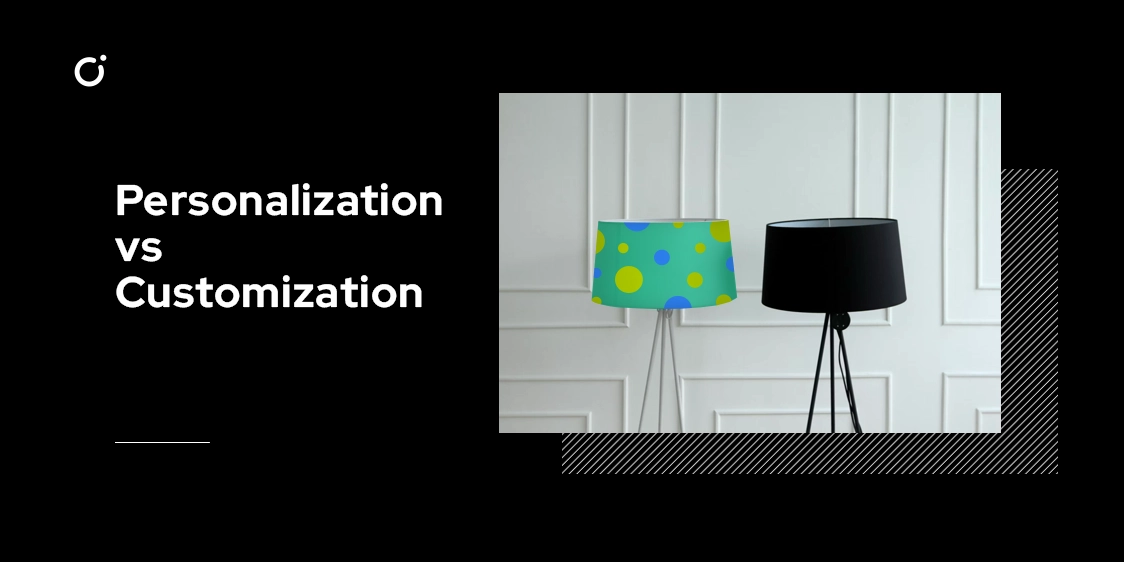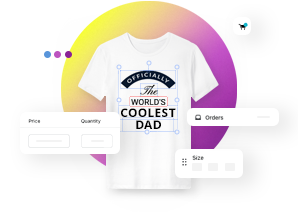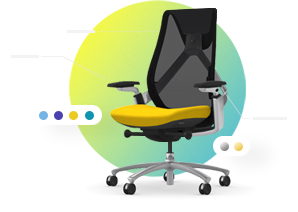On this page
Personalization vs Customization in E-commerce

In the ever-evolving world of online shopping, two terms became very popular in the recent years - personalization and customization. Although these are often used interchangeably, it seems that many people are still confusing one with the other.
In my opinion, understanding their distinct qualities is crucial for crafting unique shopping experiences in e-commerce in 2023. With this article I’ll navigate the difference between personalization and customization, shedding light on these simple yet powerful business features that can redefine the way we engage with brands and make our online shopping endeavors truly memorable.
Personalization in E-commerce
Personalization in e-commerce is the art of tailoring a user's shopping experience based on their individual preferences, behavior, and past interactions with the platform. It involves leveraging customer data to deliver the most relevant content, product recommendations, and targeted promotions to each user. The primary objective of personalization is to create a sense of individuality and connection, leading to increased engagement and ultimately, higher conversion rates.
E-commerce platforms use advanced algorithms and machine learning techniques to analyze vast amounts of data, including browsing history, purchase patterns, wishlists, and demographic information. This data-driven approach enables businesses to make informed decisions about what products and offers to present to each user, effectively enhancing their shopping journey.
For example, when a user visits an e-commerce website, the platform can showcase product recommendations based on their previous purchases or items they have shown interest in. Additionally, personalized email marketing campaigns can be designed to send tailored promotions, discounts, or reminders to customers, encouraging them to return to the site and complete their purchases.
Personalization examples:
-
Smart Closet Recommendations: An online fashion retailer uses AI-powered personalization to offer customers a "Smart Closet." The platform analyzes a customer's past purchases, browsing history, and style preferences to curate personalized outfits tailored to their unique taste. Customers can also input their upcoming events and occasions, and the Smart Closet suggests suitable attire for each event, making the shopping experience more convenient and personalized.
-
Customized Skincare Regimen: An e-commerce store specializing in skincare products utilizes personalization to offer customers tailored skincare regimens. Customers complete a detailed skin assessment quiz, including skin type, concerns, and environmental factors. Based on this information, the platform generates a customized skincare routine with recommended products suited to the individual's specific needs and concerns.
Customization in E-commerce
Customization in e-commerce empowers customers to actively participate in the product creation process, allowing them to design products according to their unique preferences and requirements. This hands-on approach fosters a deep sense of ownership and satisfaction among customers, as they are able to curate products that align perfectly with their tastes.
Customization is particularly prevalent in industries such as fashion, footwear, and tech gadgets, where consumers seek products that reflect their individual style and personality. E-commerce platforms offer a range of customization options, such as choosing colors, materials, shapes, and adding personalized engravings or prints on it.
The success of customization lies in its ability to address the desire for uniqueness among consumers. By enabling customers to personalize products, businesses can differentiate themselves from competitors and create a loyal customer base that values the exclusive experience they receive.
Examples of customization:
-
Custom 3D-Printed Jewelry: An online jewelry store provides customers with the option to design their unique jewelry pieces using a 3D customization tool. Customers can choose from a selection of base designs and then customize various aspects such as gemstones, metals, engravings, and intricate patterns. The final design is then 3D-printed and delivered to the customer, creating one-of-a-kind jewelry pieces.
-
An online art and decor store offers customers the option to create their own personalized wall art prints. Customers can upload their favorite photos, artwork, or quotes and customize them with different framing options, sizes, and printing materials. The e-commerce platform provides a real-time preview of how the custom print will look on the wall of the customer's home. Customers can also add personalized captions or messages to the prints. Once the design is finalized, the store prints the custom artwork on high-quality materials and delivers it to the customer's address. This allows customers to have unique and meaningful wall art that reflects their personal style and memories.
What are the key differences between personalization and customization in e-commerce?
In simple terms, you could say that personalization is providing users with an experience based on their previous choices purchase history, and data collected about similar audiences, whereas customization is providing users with the ability to decide and change the products they are going to buy, how the information is provided, etc.
| Aspect | Personalization | Customization |
|---|---|---|
| Approach | Utilizes customer data and automated algorithms to deliver relevant content and product recommendations | Offers various tools and options for customers to actively design and modify products according to their preferences |
| User Involvement | Requires minimal effort from users as it relies on data analysis and automated systems | Demands active participation from users who make decisions regarding product design, features, and specifications |
| Scope | Impacts the overall user journey by delivering personalized content and recommendations across the platform | Specific to individual products or services that can be customized according to user preferences |
Personalization vs Customization challenges
While personalization and customization offer numerous benefits, they also come with certain challenges that e-commerce businesses must address to successfully implement on their e-shops.
Main challenges of personalization:
| Challenges | Explanation |
|---|---|
| Data Collection and Privacy | Gathering and using customer data for personalization can raise privacy concerns and require data protection compliance. |
| Data Quality and Accuracy | Personalization algorithms rely on accurate data, making data quality essential for effective recommendations. |
| Technical Infrastructure | Building and maintaining the necessary technical systems, such as AI-powered analytics, is essential for effective personalization. |
| Integration and Compatibility | Seamlessly integrating personalization features into existing e-commerce platforms and ensuring compatibility is vital for consistent experiences. |
| Personalization Fatigue | Excessive personalization can lead to customer fatigue and disengagement if not carefully balanced with general content. |
Main challenges of customization:
| Challenges | Explanation |
|---|---|
| Technical Complexity | Implementing customization features may require advanced technical infrastructure to handle design modifications and real-time previews. |
| User Experience | Ensuring a seamless and user-friendly customization process is crucial for a positive user experience and customer satisfaction. |
| Cost and Production Complexity | Offering customization may involve additional production steps and resources, impacting manufacturing costs and logistics. |
| Quality Control | Ensuring consistent quality in customized products is crucial to meet customer expectations and avoid errors. |
| Returns and Refunds | Establishing clear policies for personalized items is crucial since customization may limit standard return options. |
Conclusion
In the ever-competitive e-commerce landscape, delivering tailored experiences to customers is no longer a luxury but a necessity. Personalization and customization are two powerful strategies that can significantly impact an e-commerce venture's success by enhancing user engagement, satisfaction, and overall business growth.
Understanding the differences between personalization and customization empowers e-commerce businesses to choose the most suitable approach based on their target audience, industry, and objectives. By effectively implementing both strategies, businesses can create a personalized and interactive shopping environment that fosters customer loyalty and ultimately sets them apart from their competitors.

